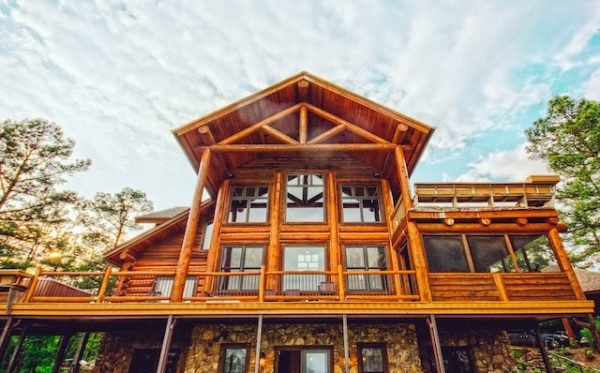
Log cabins hold a special place in the history of architecture. Their rustic charm, simplicity, and durability have made them an enduring symbol of the American frontier. When you think of log cabins, images of early settlers and pioneers come to mind, but the concept of a log cabin has evolved significantly over the years. In this article, explore the intriguing question: Are modern log cabins different from those of the past? We will delve into the various aspects that have transformed these iconic structures while retaining their heritage’s essence.
1. Materials Used
One of the most significant differences between modern log cabins and their historical counterparts lies in the materials used for construction. In the past, log cabins were primarily constructed using hand-hewn logs from nearby forests. These logs were stacked horizontally, interlocking at the corners to create a sturdy and weather-resistant structure.
In contrast, modern log cabins often incorporate construction materials. Steel siding resembles traditional logs and provides a more convenient and cost-effective alternative to traditional wood logs. This material not only mimics the appearance of logs but also offers increased durability and resistance to weather, pests, and decay.
2. Design and Architecture
The design and architecture of log cabins have also evolved significantly over time. Historical log cabins were typically small, single-room structures with steep, gabled roofs. They were built for practical purposes, providing shelter for early settlers and their families. These cabins often lacked the amenities mostly associated with modern homes, such as plumbing and electricity.
On the other hand, modern log cabins have embraced a wide range of architectural styles and designs. While some contemporary log cabins still adhere to the traditional one-room layout, others, like these from Frontier Log Homes, have expanded into luxurious, multi-story homes. Architectural features like large windows, open floor plans, and spacious porches have become common in modern log cabin designs. Additionally, modern log cabins are equipped with modern amenities, making them suitable for year-round living.
3. Foundation and Support
Historical log cabins were typically built on stone or dirt foundations, which provided a stable base but lacked modern foundations’ insulation and moisture control features. These early cabins were susceptible to settling, leading to uneven floors and drafts.
Modern log cabins, on the other hand, seamlessly incorporate modern technology. Many unique, handcrafted log homes now feature electrical wiring for lighting, appliances, and entertainment systems. Plumbing provides access to clean water and sanitation. Furthermore, modern log cabins often employ advanced heating and cooling systems, ensuring comfort in all seasons.
4. Maintenance and Durability
One of the most striking differences between historical and modern log cabins is the maintenance required to keep them in good condition. Historical log cabins demanded regular upkeep, including re-chinking the gaps between logs, applying protective coatings, and addressing wood decay and pest infestations.
Modern log cabins benefit significantly from advancements in materials and construction techniques. One such advancement is the use of Steel log siding, which offers durability and minimal maintenance compared to traditional wood logs. Steel log siding resists rot, pests, and weathering, reducing the need for frequent repairs and upkeep. This allows modern log cabin owners to spend more time enjoying their cabins and less time maintaining them. However, if repairs are needed, hiring a reputable company like Log Masters Restorations USA can help restore the cabin to its former glory, ensuring it remains a comfortable and beautiful home.
5. Environmental Considerations
In the past, the construction of log cabins often involved clearing large swaths of forested land to obtain the necessary logs. While this practice was sustainable for early settlers, it’s not environmentally responsible.
Modern log cabins take environmental considerations into account. Sustainable logging practices and engineered wood products reduce the impact on forests. Additionally, modern log cabins can be designed with energy-efficient features, such as double-glazed windows and well-insulated walls, reducing their carbon footprint.
6. Integration with Modern Technology
Integrating modern technology is perhaps the most significant departure between historical and modern log cabins. Historical log cabins had no access to electricity, plumbing, or modern heating systems. Life in these cabins was characterized by simplicity and self-sufficiency.
Modern log cabins, on the other hand, seamlessly incorporate modern technology. They feature electrical wiring for lighting, appliances, and entertainment systems. Plumbing provides access
to clean water and sanitation. Furthermore, modern log cabins often employ advanced heating and cooling systems, ensuring comfort in all seasons.
Conclusion
Modern log cabins have evolved in numerous ways compared to their historical counterparts. While they retain the rustic charm and natural beauty of log construction, they benefit from materials, design, construction techniques, and technology advancements. Modern designs offer spaciousness, comfort, and year-round living, a far cry from the small, practical cabins of the past. Improved construction techniques, foundations, and insulation improve longevity and energy efficiency.

Speak Your Mind